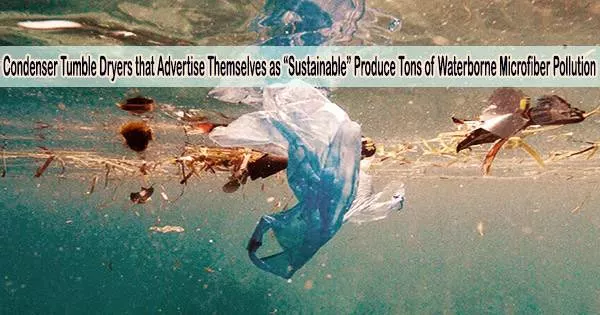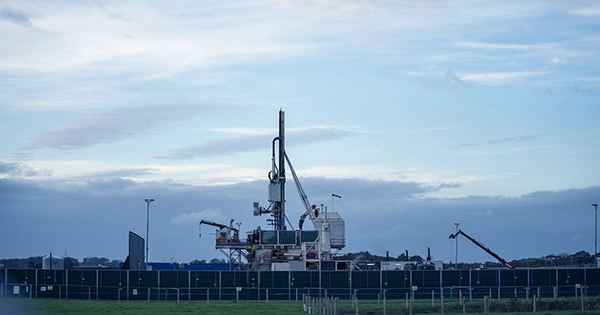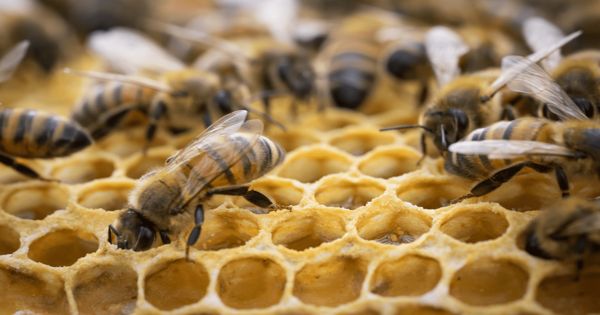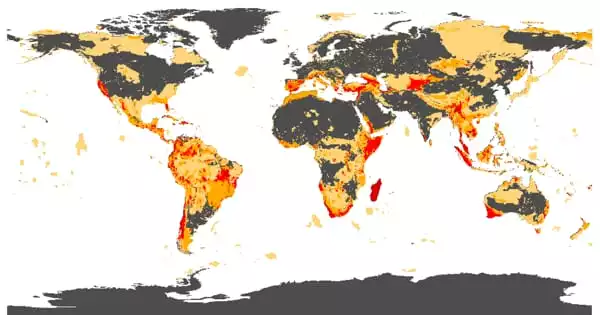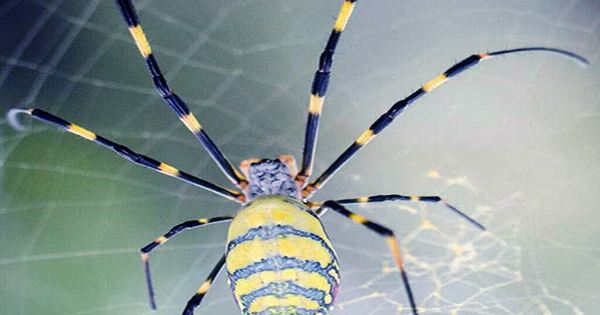According to a recent study, hundreds of tonnes of potentially hazardous microfibers are emitted into streams and oceans across the UK and Europe when laundry is dried in condenser tumble dryers.
The study, which was co-authored by researchers from Northumbria University and Procter and Gamble scientists, was released in the scientific journal PLOS ONE today (May 24, 2023).
Condenser dryers may emit less airborne microfibers than vented dryers, but more than 600 tonnes of microfibers are still discharged into residential drains each year, according to the research team. This is a substantial source of waterborne microfiber contamination.
Both types of tumble dryer produce microfiber pollution. Condenser dryers have been shown in recent research to potentially reduce microfiber pollution in the air, but their effects on waterborne microfiber pollution have not been well understood.
The researchers discovered that despite the fact that condenser dryers do not exhaust microfibers into the air like vented dryers do, they nonetheless produce more than 7,200 tonnes of microfiber annually in the UK and Europe.
Although 91% of this is captured in the lint filter, which many people discard in their household waste, the remaining microfibers, totaling a tremendous 641 tonnes, are collected in the condenser and thrown down the drain. This is equivalent to the weight of more than 100 adult male African elephants. This makes condenser tumble dryers significant sources of microfiber water pollution.
However, some appliance makers advise customers to wash their lint filters under the faucet. This advice might result in ten times more tonnes of microfibers entering our waterways if customers heed it. This indicates that drying contributes more to the contamination of watery microfibers than washing does.
To evaluate the environmental impact of condenser dryers, Professor John Dean, from Northumbria University’s Department of Applied Sciences, worked alongside researchers at Procter & Gamble to test loads of new, clean garments as well as dirty laundry sourced from volunteers in Newcastle upon Tyne. They collected and analysed microfibers from several components of each type of dryer.
The contribution of washing machines to aquatic microfiber pollution has now been extensively studied and filtration technology is now being integrated into those appliances to mitigate the issue. Our recent work in collaboration with Northumbria University has recognised, for the first time, that the most important tumble dryer types used in Europe condenser and heat pump can also be significant contributors to aquatic microfiber pollution, especially if users wash lint filters in a sink.
Dr. Neil Lant
“We have for the first time focused on microfiber release from vented and condenser dryers using real consumer laundry loads,” said Professor Dean, an expert in analytical science and environmental pollutants.
“It was found that most microfibers released from dryers is collected in the lint filter, thereby preventing release into the environment. However, when you realise that some manufacturers then recommend regular washing of the lint filter under a running tap, this contributes directly to an increase of waterborne microfibre pollution.”
“After considering the environmental impact of current domestic household practices, a simple remedy is proffered. Instead of washing the lint filter under the tap after use in the tumble dryer, simply clean the filter either by hand, a light brush, cloth, or vacuum cleaner, and dispose of the collected fibres, as dry waste, in household waste. This simple and effective procedure can reduce microfibre release from tumble dryers and contribute to the protection of the global natural water environment.”
While a lot of research has been done on the amount of microfibers that washing machines flush down the drain, historically, less has been known about the discharge from tumble dryers.
However, due to the fact that fibers are also liberated from fabrics during the drying process, the tumble dryer has recently taken center stage in comparison to the washing machine.
The research team is currently pleading with the appliance sector, its trade associations, and legislators to acknowledge that all types of tumble dryers may be important sources of environmental microfiber contamination.
According to the researchers, this problem has to be addressed by updated usage guidelines and better appliance design.
The influence of that step of the laundry process is currently being addressed by initiatives to install microfiber filtration technologies in washing machines. This study shows that the next logical step is to apply similar strategies to tumble dryers.
Dr. Neil Lant, a Research Fellow at P&G and their leading scientist on this study, added: “The contribution of washing machines to aquatic microfiber pollution has now been extensively studied and filtration technology is now being integrated into those appliances to mitigate the issue.”
“Our recent work in collaboration with Northumbria University has recognised, for the first time, that the most important tumble dryer types used in Europe condenser and heat pump can also be significant contributors to aquatic microfiber pollution, especially if users wash lint filters in a sink.”
“We do over 7 billion dryer loads in the UK and EU each year, with condenser dryers generating 7,200 tonnes of microfibre. We can prevent around 90% of that from causing water pollution by cleaning lint filters into household waste, but to deal with the rest we’ll need to redesign the air filtration systems in all types of dryers.”
Procter & Gamble has been working with analytical and forensic fibre science experts at Northumbria University for over six years to improve our understanding of microfibre release during washing and drying.
